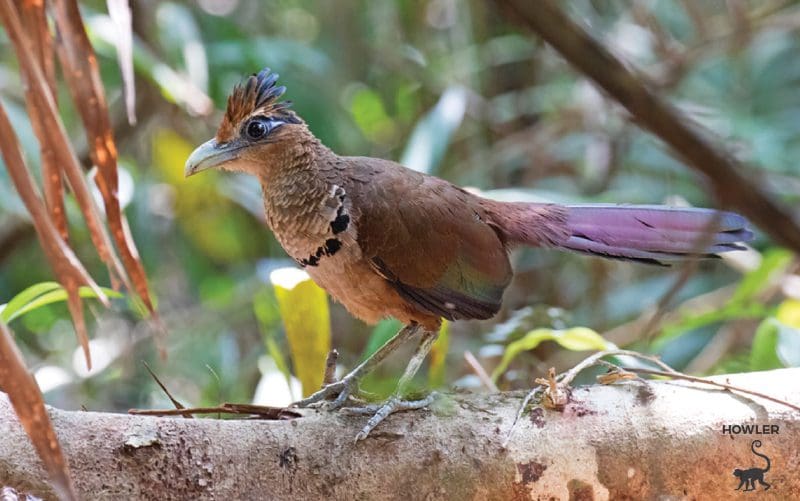
Cuckoo, Cuckoo! Not a Rare Sound in Costa Rica
Cuckoo, Cuckoo! Not a Rare Sound in Costa Rica. You probably know the familiar sound, if not the little bird, of Bavarian clock renown. In fact, these clocks originated with the cuckoo bird species found in the forests of Germany. But did you know there are also cuckoos here in Costa Rica?
The cuckoo bird family is widespread throughout the world, found on all continents but Antarctica . For the same reason motmot is the moniker of a different bird species, the cuckoo is named for the sound of its bird call in most languages. In France, for example, it is known as coucou, in Germany kuckuk, in Russia kukush-ka and in Japan kak-ko. In Spanish, it’s cuco.
Cuckoos are very common in Costa Rica, although you may not know them as such. There are three cuckoo categories here, 11 species in all.

Rufous-vented ground cuckoo
Ani
Ani, the most common and visible type found in Costa Rica, is large, social and black in color. Commonly confused with blackbirds and crows, two ani species may be seen in this country. Predominantly, the grooved-billed ani has the field mark of a striated or grooved bill. Only in the southernmost part of Costa Rica will you find the smooth-billed ani, with its relatively large and smooth bill. With this being the north end of its habitat range, the smooth-billed ani is much more common in South America.
The cuckoo has long been
associated with superstitious beliefs.
Squirrel cuckoo and others
The best known and most widely seen member in this category is the squirrel cuckoo, whose long tail and coloration bear resemblance to a squirrel while sitting on a branch. In fact, the squirrel cuckoo’s long tail is said to act as a rudder for navigating thickets and brush. Although this bird does have a cuckoo call, it sounds more like a wolf’s whistle to me!
Other members of the same bird group in Costa Rica are harder to see. The mangrove cuckoo can be found along the Pacific coast mangroves, while the yellow-billed and black-billed cuckoos are relatively uncommon migrants.

Mangrove cuckoo
Ground dwellers
The last group consists of cuckoos that like living on the ground, including the one famous for its intelligence and “beep-beep.” Yes, the roadrunner cartoon character is a cuckoo! Costa Rica has two types of ground-dwelling cuckoos. The easiest to see is the striped cuckoo, which lives along forest edges. Its difficult-to-find relative is the pheasant cuckoo.
Two other species are named for their preferred ground habitat. The lesser ground cuckoo, with its beautiful eye pattern, is found in the Nicoya Peninsula vicinity, while the hard-to-spot rufous-vented ground cuckoo, may be spotted on the east side and into the area around Rincón de la Vieja.
 Roadrunner
Roadrunner
Fact and folklore
On the darker side of cuckoo lore is that most members of this bird family are regarded as “brood parasites.” That means they sneak into the nests of other birds to lay their eggs. The unknowing host bird hatches and raises the cuckoo babies, which often kill the other young in the nest. In Costa Rica, only the striped and pheasant cuckoos exhibit this behavior.
The cuckoo has long been associated with superstitious beliefs. For example: it’s good luck to have money in your pocket when you hear a cuckoo. It’s also been said that whatever you are doing when you hear a cuckoo should be repeated throughout the year, as the call is a sign that the activity is beneficial. For single people, the number of cuckoo calls or notes signifies how many years they will remain unmarried.
Cuckoo, cuckoo!
